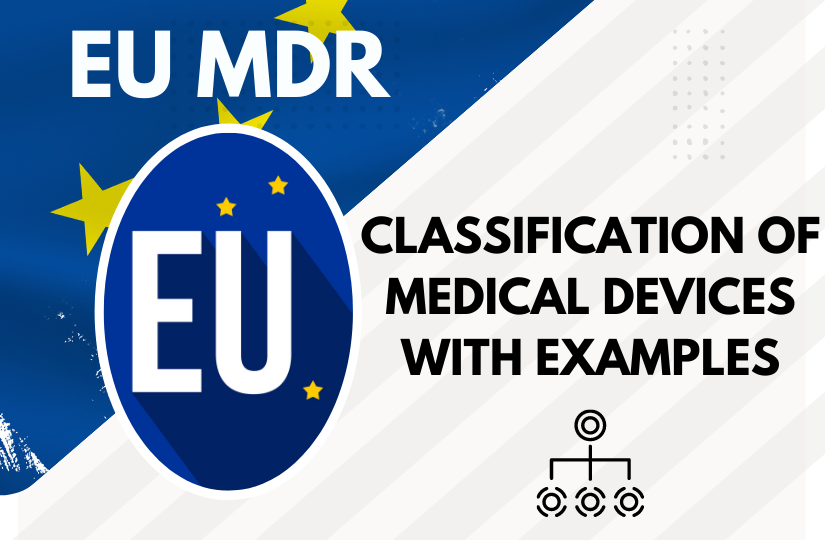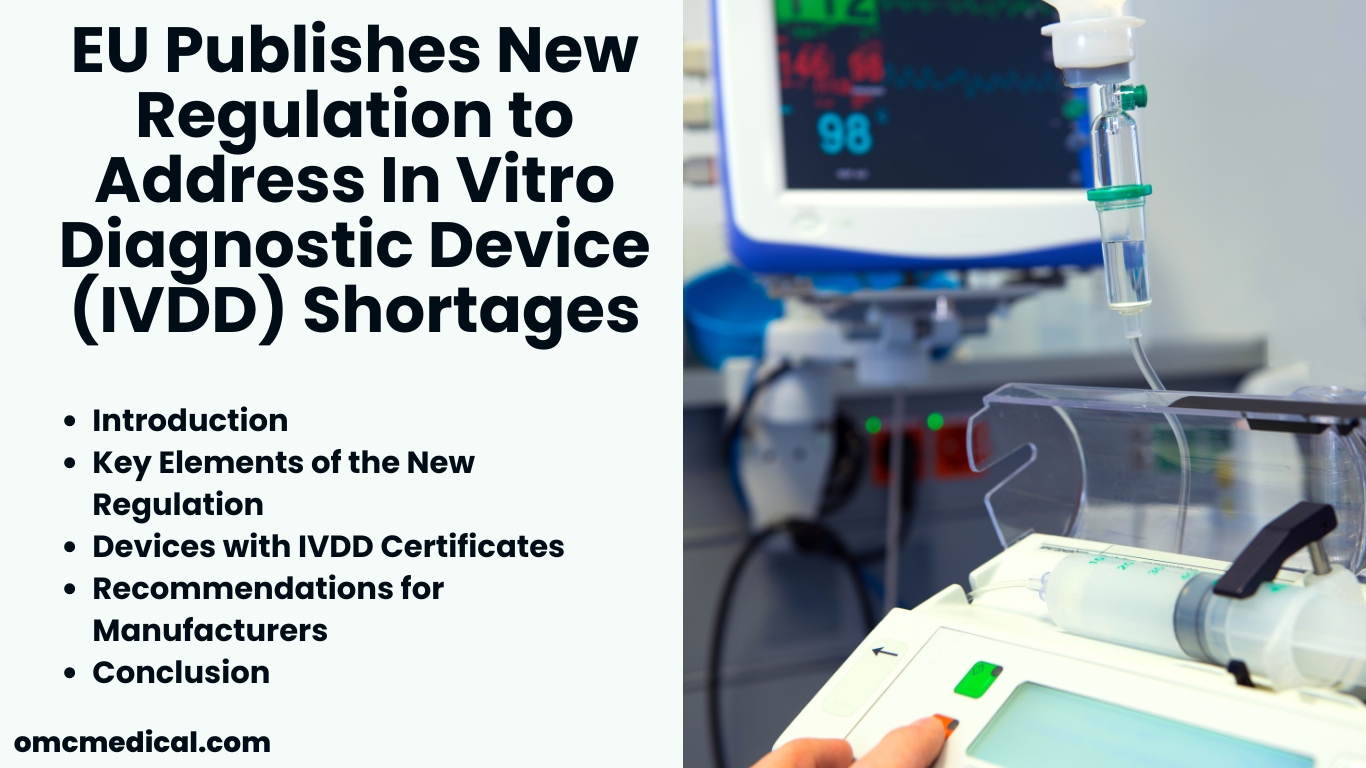EU Classification of Medical Devices
Around the world, the definition of medical devices varies. Still, generally, a medical device is any instrument, equipment, machine, appliance, implant, reagent for in vitro use, software, material, or other similar or related product intended by the manufacturer to be used either alone or in combination for various medical purposes.
Medical devices range from low-risk products such as thermometers to high-risk devices such as pacemakers.
In the European Union, the medical devices are classified as I (lowest risk), IIa, IIb, and III (highest risk), based on their intended use and risk possibilities, with the concern for public health and safety.
Class I devices can further be subdivided into Is – sterile condition, Im – measuring function and Ir – reusable surgical, and for Class I devices, there is no requirement of involving the notified body, as the manufacturer can declare the conformity of class I devices by following the conformity assessment procedure outlined in Article 52 of EU MDR 2017/745.
What is conformity assessment?
Conformity assessment is the process of determining if the MDR standards for a device have been met. The manufacturer is obliged to declare the conformity for each medical device, and then the notified body assesses that conformity.
The involvement of the notified body depends on the EU classification of the device. The higher the classification of the device, the greater the involvement of the notified body.
Requirements of different aspects as per the EU classification of Devices
General requirements:
- All the devices, irrespective of their classes, must meet the EU MDR’s general safety and performance requirements listed in Annex I. Also, the manufacturers must supply all the relevant information about the devices. For more details about the information to be provided by the manufacturers, visit here.
- The devices must be CE Marked except for the devices which are custom made and meant for clinical evaluation purposes.
- The devices must be assigned a Unique Device Identifier (UDI) and registered in the European Union’s electronic database EUDAMED.
- In case the devices are implantable, all the necessary information about the device and an implant card must be given to the patients.
Clinical Evaluation: Clinical evaluation is a series of procedures to examine and analyse clinical data to validate a medical device’s safety, clinical performance, and efficiency when used as intended by the manufacturer.
Carrying out clinical evaluations is a must for all medical device manufacturers. Premarket clinical investigation is a compulsion for class III and implantable devices.
Post-Market Surveillance: For any medical device placed on the market, manufacturers perform post-market surveillance to gather and review experiences obtained from those medical devices and determine the need for action, if any required.
In short, examining post-market monitoring experiences can reveal areas where the medical device could be improved.
Manufacturers of class I devices, including sterile, those with a measuring function and the reusable surgical instruments, must prepare and maintain a post-market surveillance report.
For higher-risk devices of classes IIa, IIb, and III, a Periodic Safety Update Report (PSUR) must be prepared and updated at specific intervals (annually for class IIb and III devices) and every two years for class IIa devices) by the manufacturers.
Traceability: To cope with the issue of not being able to detect harmful and risky medical devices in the past, the need for traceability of the devices was realised, as it has a significant impact on improving patient and user safety.
The capacity to fully trace a piece of medical equipment throughout its entire existence, from manufacturing to disposal, is traceability. Today, traceability is required for each medical device available in the market.
Therefore, to have the record of each device, economic operators and health organisations must have the Unique Device Identifiers (UDI) of the devices so that the details about where the device is or is to be, made available when registering the device can be provided to the member states of the Union.
Instruction for Use (IFUs): IFU is defined as the information that the manufacturer should mandatorily supply to notify the device user about the intended purpose and proper usage of the medical device, along with any precautions that should be taken.
An exception exists for class I and IIa devices. They may be delivered without instructions for use if they may be operated safely without them.
Classifying as per the EU MDR
Source of information: MDCG 2021-24 MDCG guidance document on classification of medical device in EU

Rules
In EU MDR, there are 22 rules classified under the following categories:

The below table describes all the rules, the allotment of classes for the devices/products, and the examples:
Application of the classification rules
Before implementing the categorization standards, the manufacturer should evaluate if the devices are a medical device, an accessory for a medical device, a medical device part or component for replacement, or a device without a medical purpose, as defined by the MDR.
The class of the device is determined by the intended purpose of the device and its characteristics specified by the manufacturer. For example, a suture organizer used in open-heart surgery to keep suture threads in the correct sequence should not be deemed an invasive device.
Manufacturers must consider all rules and regulations to classify the devices correctly. If any restrictions or sub-rules within a single EU classification rule apply to the same device depending on its intended use, the strictest rule and sub-rule will apply, resulting in a higher EU classification.

Example:












